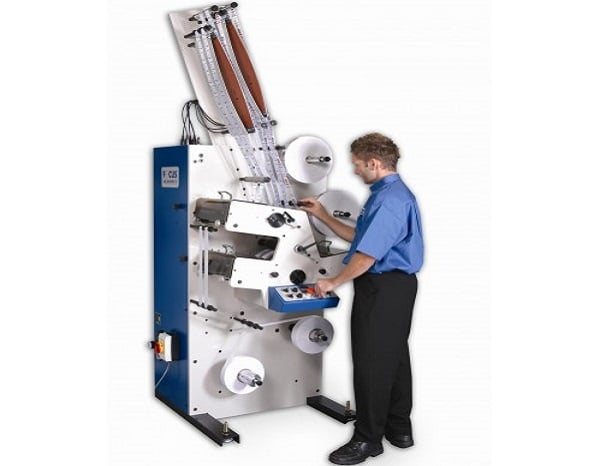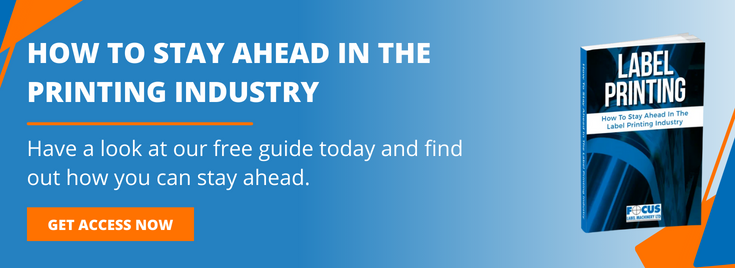
Textile labels are small labels usually made of nylon, taffeta or polyester satin, sewn into the interior of a garment so it is not visible when worn. Textile labels are intended to convey important information about the garment to the consumer. This might include size information, branding, wash care instructions, country of origin, fabric content and product details. All types of clothing and shoe manufacturers use textile labels, in products ranging from dresses and t-shirts to socks and gloves.
As part of the ever evolving world of textile innovation, we will be attending the world's largest international textile and garment technology exhibition; ITMA 2019 in Barcelona! Providing an unrivalled marketplace and knowledge platform, ITMA is set to feature more than 1,600 exhibitors and an attendance of over 120,000 visitors. Come and join us in June!
Textile Ribbons & Heat Transfer
A variety of synthetic fabrics can be used for textile labels. For printing purposes the substrate comes either in the form of rolls of textile ribbon – which is the standard format for small to medium ‘sew on’ labels – or as heat transfer patches. Depending on the press, textile ribbon can be printed on a single or double side, and may have up to six colours on the face side.
Heat transfer patches are printed not onto fabric but onto heat sensitive release paper – usually through silkscreen printing – on which text and pictures appear as inverted images. This is stage one. In the second stage of the process the images are transferred directly from the release paper to the garment by means of heat and pressure in a specially designed printing press.
This allows for larger images and volumes of information to be included than with traditional labels. Heat transfer is also the preferred labelling method for intimate items of clothing such as underwear, swimwear and sports clothing, where a sewn in label may be obstructive or irritate the skin.
Elastic Ribbon
Elasticated fabric ribbon is also sometimes used for textile labels. This requires the substrate to be pre-tensioned before being fed around the print run, in order for text and images to be printed onto the ribbon while the elastic is in a controlled, stretched state. Tension is gradually released after printing is completed, and the label ribbon fed into a collection container, rather than being wound onto a reel.
Substrate Quality
It is essential that textile labels are produced to a consistent standard, so as to preserve the printed information through washes and wear and tear. Textile labels need to be extremely durable, tear resistant, waterproof and fray resistant.
Print Quality
Using a high quality label material is vital, but it is also necessary to be able to print large quantities in short time frames, in order to optimise efficiency. Our Focus Label printing presses use a direct printing process which allows printing on both sides of the label. This maximises the amount of useful consumer information that can be printed on the same amount of fabric.
Garment labels are designed to be regularly washed, so need to be printed with a special heat curable ink that increases the level of heat and water resistance. After printing, the finished products require curing in an industrial oven at 125°C for around two hours.
Our Textile Label Printing Machines
We manufacture two types of specialist flexographic textile label printing machines at Focus Label: the LX Letterflex series and the B4. Both presses are among the most advanced for high-quality yet cost-effective textile label printing.
- LX Letterflex – A versatile flexo printing press suitable for printing clothes labels, decorative ribbon, apparel trims, elastic ribbons and heat transfer paper. Advanced features include full-colour capacity, fast cycle changes and an inbuilt combination drying system and in-line label cutting system.
- B4 - An entry-level label printing machine for small product information and wash care labels, the B4 can produce large volumes of labels with consistent quality, at high production rates. The press supports multi-ribbon printing and comes with an integrated infrared drying system.
Our printing presses enable higher productivity and superior print quality when dealing with a number of textile label substrates. Multiple colours can be printed in close register using a central impression press, then adhesive powder inks applied and cured in line, allowing labels to be completed in a single pass.
We also manufacture bespoke equipment, so if you can’t find what you are looking for in our standard range, please get in touch to discuss your requirements, or come and find us at our ITMA 2019 stand in June! We'd love to see you there.






